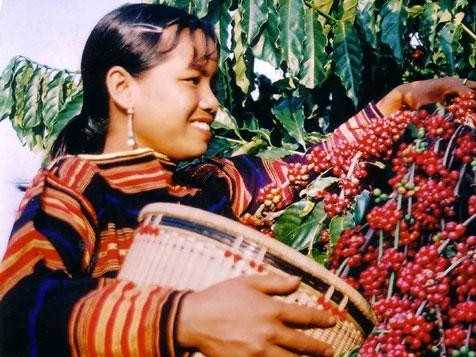MILAN – The Vietnam Coffee and Cocoa Association (Vicofa) has set the goal to double the value of the country’s coffee exports to $6 billion by 2030. In order to reach this target, Vietnam’s coffee industry needs increase the share of processed coffee in its exports from less than 10% today to at least 25%. This represents a big challenge for the industry due to the level of technology, complex factory operation and awareness of farmers, says VNS.
At present, Vietnam has 160 coffee roasting facilities, 11 coffee blending facilities and eight instant-coffee processing facilities. The number of instant-coffee processing facilities is small and most of them are operating below their designed capacity.
On the other hand, Vietnam‘s processed coffee brands still have no place in the world market, and branding takes a lot of money and effort.
Deputy Minister of Industry and Trade Do Thang Hai said that to gain the target of $6 billion, Vietnam’s coffee industry needed to strengthen connection between production and trade, expand export markets and develop products associated with brand building, towards building a sustainable coffee value chain.
According to the Minister of Agriculture and Rural Development Le Minh Hoan, if the coffee industry wants to have sustainable development, there must be linkages among provinces or economic regions to form a larger-scale production area and build a brand for Tay Nguyen coffee.
The Ministry of Agriculture and Rural Development (MARD) will continue to implement projects on sustainable development for the domestic coffee industry.
For the Central Highlands provinces, the ministry will set up logistics infrastructure for the coffee industry to create higher coffee value and more processed products. This will form a coffee production chain to increase value of coffee beans and income for coffee producers.
“The Europe-Vietnam Free Trade Agreement (EVFTA) has opened up great opportunities for the domestic coffee industry. In the future, the ministry will develop its projects on exporting agricultural products to the EU, including coffee. At the same time, it will also have a strategy for Vietnamese agricultural products to enter large distribution systems in Europe,” Hoan said.
“If Central Highlands coffee wants to reach out to the world market, it needs to change production, harvesting and processing in accordance with climate change and green consumption of the world market.”
The coffee industry needs to restructure effectively, including building a specialised cultivation area associated with the development of coffee processing; and application of advanced technology.
It need to promote linkage of raw material areas with processing facilities to create a stable supply of quality goods, meeting the requirements of the market.
The industry must have solutions to remove difficulties and support for farmers and businesses in attracting investment; apply science and technology for production; and improve quality of human resources.
In addition, branding must be paid more attention to. Now, the building and developing of brands have not been realised and effectively implemented by businesses. This is one reason why Vietnam’s agricultural produce, including coffee, are unknown on the world market.
The local enterprises need to survey terms of market share, taste, quality, and price. They must determine the proportion of processed products to build a clear development direction, advertising, marketing and brand positioning strategies.
The State will support enterprises to build and develop their brands through campaigns on communication and image promotion, and training programmes on improving design ability.


















